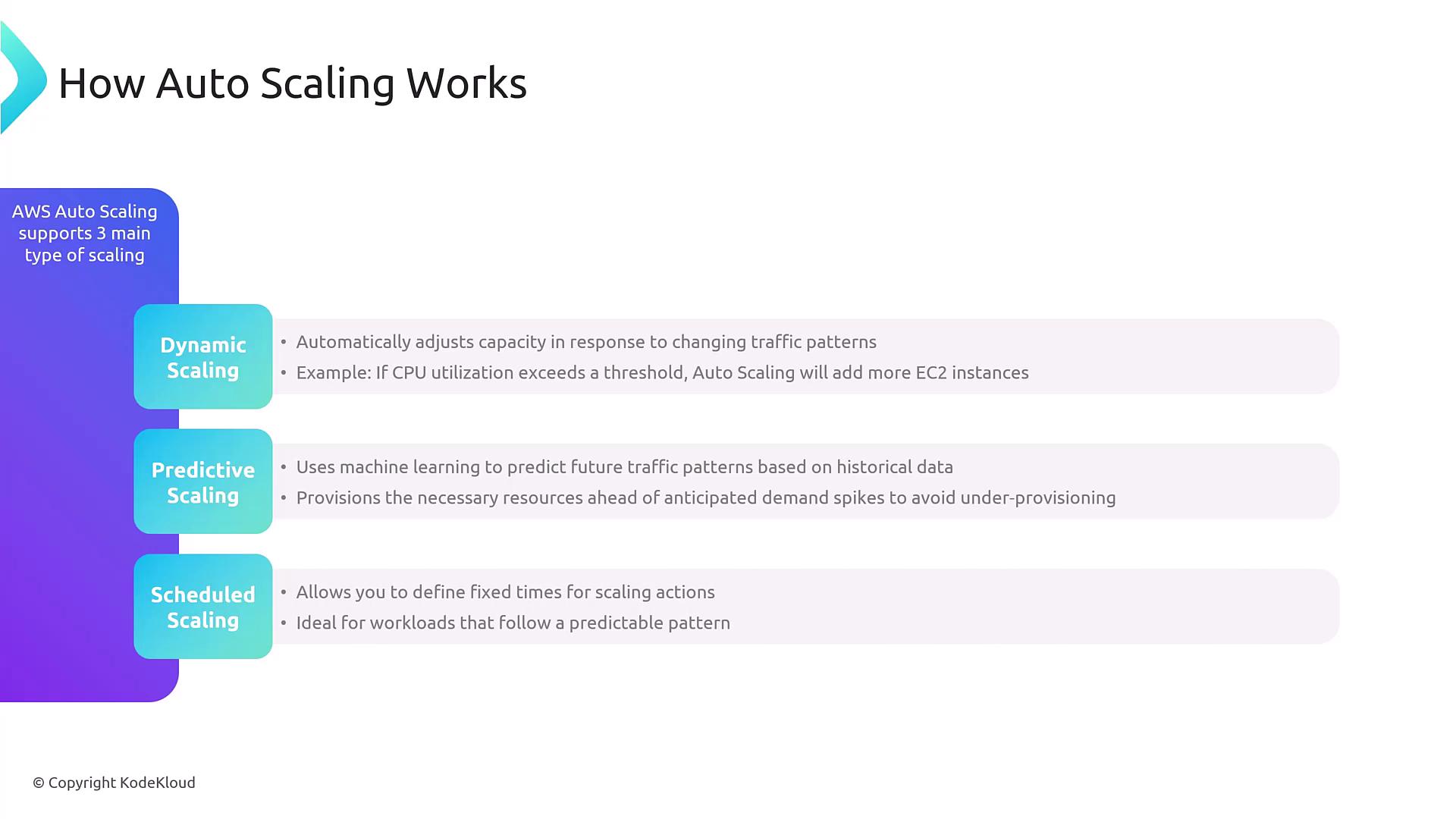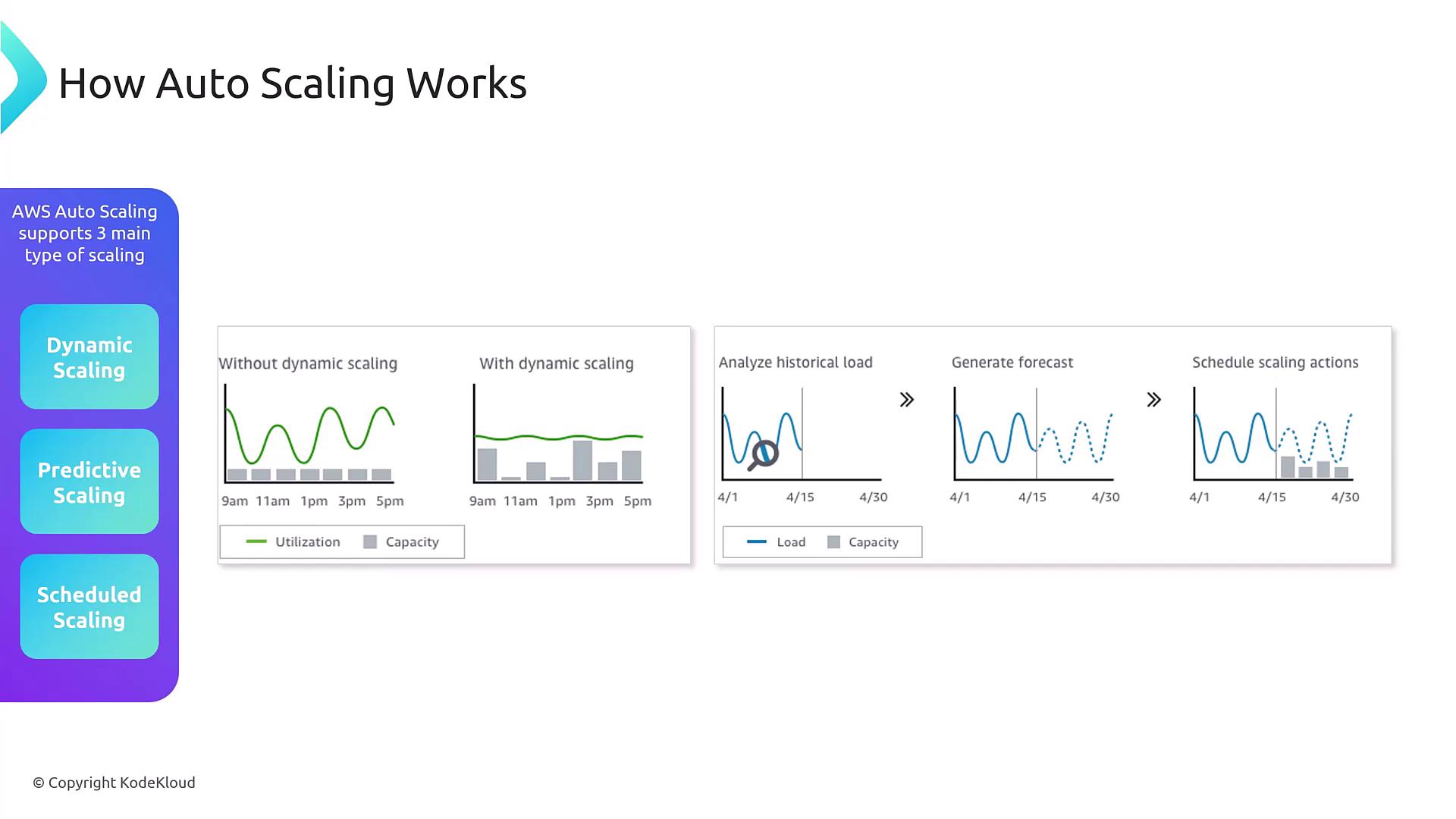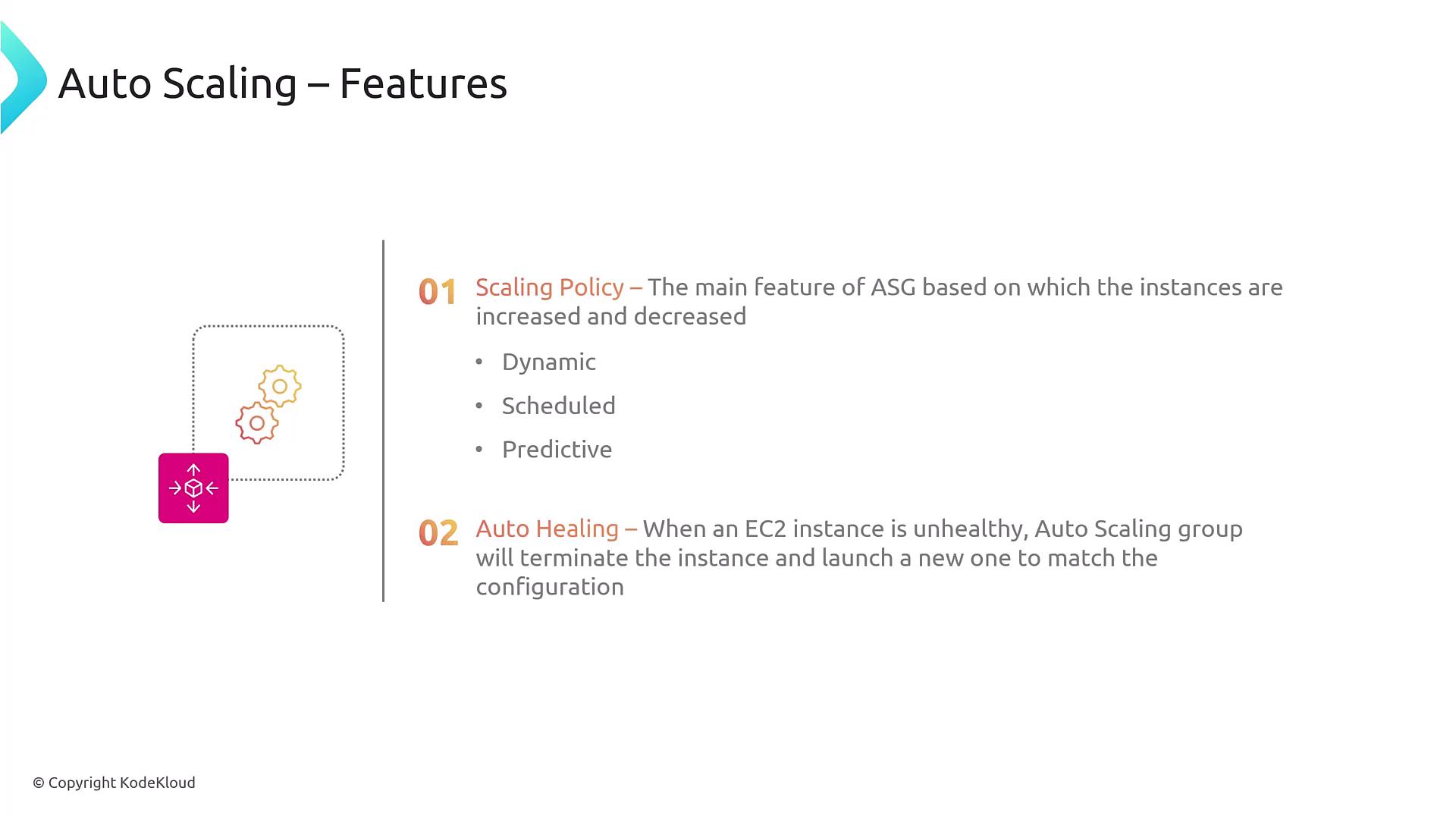AWS Certified SysOps Administrator - Associate
Domain 2 Reliability and BCP
AWS Auto Scaling Overview
Welcome to this comprehensive guide on AWS Auto Scaling—a critical feature designed to enhance business continuity and reliability. In this lesson, we will explore how AWS Auto Scaling dynamically adjusts resources to match your workload, ensuring high performance and cost efficiency while simplifying operational management.
Imagine a bakery that produces cupcakes based on customer demand. As demand increases, the bakery adds more ovens when the current ones reach 80% capacity. Conversely, when demand drops, an oven is turned off, reducing costs such as electricity and space usage. This analogy reflects the essence of auto scaling: dynamically adding or removing resources according to current needs.

Traditionally associated with EC2 virtual machines, auto scaling now extends to nearly every AWS service, including DynamoDB, serverless options, and distributed databases like Aurora. The primary objectives of AWS Auto Scaling are to:
- Maintain performance by right-sizing your resources
- Control costs by reducing unnecessary capacity
- Simplify operations
- Proactively meet customer demand
How AWS Auto Scaling Works
AWS Auto Scaling offers three main scaling strategies to ensure your applications can adapt to changing demands:
Dynamic Scaling
This method adjusts capacity in real time according to traffic patterns. For example, if CPU utilization or latency exceeds a predefined threshold, additional instances launch until the metric falls back to acceptable levels. Dynamic scaling works for both scaling up and down, based on current conditions.Predictive Scaling
By leveraging historical performance data, predictive scaling anticipates future demand. For instance, if your service consistently experiences higher loads during tax season or holidays, predictive scaling uses machine learning to adjust capacity ahead of time.Scheduled Scaling
Scheduled scaling automates capacity changes based on predefined time intervals. For instance, if your video service faces a 400-500% load increase on weekdays from 8 a.m. to 8 p.m., you can schedule scaling actions to add capacity just before the surge and reduce it after the peak period.

With support for dynamic, predictive, and scheduled modes, AWS Auto Scaling provides the flexibility needed to adapt to various application demands.
Setting Up Auto Scaling
When configuring auto scaling for an EC2 instance, follow these steps to ensure optimal performance and cost control:
- Define the system configuration, including the instance types and their geographical location.
- Set up an auto scaling group (ASG) to manage these instances.
- Establish a scaling policy based on metrics such as CPU utilization.
A crucial part of this configuration is specifying the minimum, desired, and maximum number of instances. For example, you can set the auto scaling group with a minimum of 2 instances, a desired capacity of 4 (adjusting dynamically as needed), and a maximum of 8 instances. This setup ensures that resources remain within defined boundaries, preventing resource abuse and avoiding unexpected costs.

Note
If an instance within the auto scaling group fails, the auto recovery mechanism automatically replaces it to maintain the desired capacity. This self-healing feature supports various environments, whether running Windows, Linux, spot instances, or on-demand instances.
Beyond EC2, AWS Auto Scaling is also implemented in services like DynamoDB, ECS, EKS, Apache Cassandra, EMR, Lambda, Kafka, Neptune, SageMaker, serverless OpenSearch, and serverless Aurora, making it a foundational element in comprehensive resource management across AWS.

Integration with Other AWS Services
AWS Auto Scaling seamlessly integrates with an Elastic Load Balancer (ELB). This integration allows instances to be added or removed without modifying DNS settings, ensuring smooth transitions during scaling events and eliminating the drawbacks of traditional DNS-based failover mechanisms.

Conclusion
AWS Auto Scaling provides the precise amount of computing resources needed to keep your application performant, cost-effective, and resilient. By leveraging dynamic, predictive, and scheduled scaling, AWS enables you to tailor your infrastructure to both real-time and anticipated loads, ensuring operational continuity and business agility.
Thank you for reading this article. Stay tuned as we continue to explore more powerful AWS features in upcoming lessons.
Watch Video
Watch video content